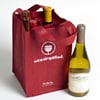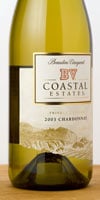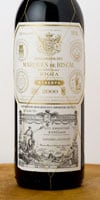Judge a wine by its label.
Just from the label, you’ll know at minimum:
- the producer
- the brand
- the varietal, or grape
- the alcohol content
- the growing region
- the year
- the bottler
Why does this matter? Because each of these criteria can indicate an excellent wine—or a not-so-good one.
Reading a Label
What's outside is your key to what's inside a bottle of wine. Click on one of the samples to learn what labels can tell you, including essentials like the producer, the grape type, alcohol content, growing region, and more.
Growing Region
Why is a wine's place of origin so important? It starts with the French concept of terroir. Literally the French word for soil, terrior (tehr-WAHR) refers not only to the type of soil in which grapevines grow, but other factors that can influence the character of the grapes, including climate, wind, and altitude. Terroir plays a role in food as well. For example, many cheese-lovers feel that the iron deposits beneath the soil in the pasture's of Stilton's domain add to the character of the cheese.
Certainly, no one can be stopped from making foods and wines inspired by the originals. Those products made outside of name-protected regions may be of high quality, too, but they will not be the same as those that hail from within a name-protected region. That's why, by law, such products must be called something else: parmesan cheese (rather than Parmagiano-Reggiano), sparkling wine (rather than Champagne) and meritage rather than Bordeaux.

 You are about to leave publix.com and enter the Instacart site that they operate and control. Publix’s delivery and curbside pickup item prices are higher than item prices in physical store locations. Prices are based on data collected in store and are subject to delays and errors. Fees, tips & taxes may apply. Subject to terms & availability. Publix Liquors orders cannot be combined with grocery delivery. Drink Responsibly. Be 21. For prescription delivery, log in to your pharmacy account by using the Publix Pharmacy app or visiting
You are about to leave publix.com and enter the Instacart site that they operate and control. Publix’s delivery and curbside pickup item prices are higher than item prices in physical store locations. Prices are based on data collected in store and are subject to delays and errors. Fees, tips & taxes may apply. Subject to terms & availability. Publix Liquors orders cannot be combined with grocery delivery. Drink Responsibly. Be 21. For prescription delivery, log in to your pharmacy account by using the Publix Pharmacy app or visiting 


